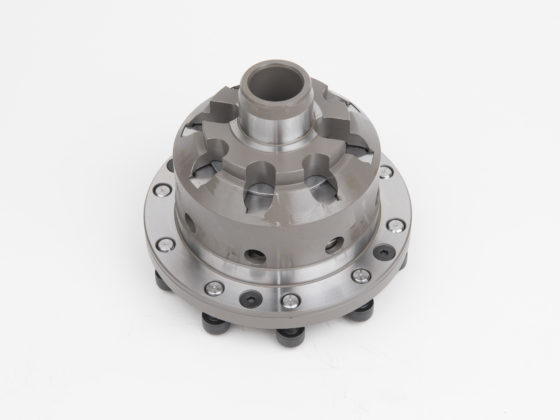,

Moore ran a 2JZ previously in his Lexus SC, and was familiar with the types of turbochargers that could give strong levels of boost when planning for this advanced FR-S. A Honeywell Turbo by Garrett GTW series 3884R snail fit the bill, paired with a K&N long nose filter element. The GTW 3884R features a ball bearing center section for fast spooling and a long life. The turbo also has a billet compressor wheel. The billet wheel is machined from a close to net shape billet for optimal grain flow. This makes for a stronger wheel where the hub can be smaller and the blades thinner for better aero efficiency.

The billet wheel lives in a ported shroud compressor housing which gives the turbo a lot more surge margin. Surge, which is a violent backflow through the compressor caused by the engine not being able to swallow the boost being created, typically at lower rpm, can damage the turbo and causes a huge loss of flow and efficiency. A ported shroud housing is particularly useful with turbo system designs that are trying to minimize lag, for instance, when using nitrous to spool the turbo faster. The GTW series turbos also have Inconel turbine wheels, Inconel is an exotic highly heat heat-resistant alloy that can tolerate much higher exhaust gas temperatures that the standard Garrett GMR material. In the abusive drifting environment where spool speeding tricks like nitrous inject, anti-lag or even both are uses, the Inconel turbone wheel gives you an edge when it comes to longvitiy.

Nameless Performance’s fabrication skills extended to many areas of the car, but perhaps none more so than the exhaust manifold. It was both a work of craftsmanship art, and technical masterpiece with many, many hours of R&D behind the magic. 321 stainless steel thin wall tubing allowed the six-to-one snaking to pipe down at equal length, after bend angles were factored in. To make things even more complex, this spaghetti housed the main reaction of the anti-lag system, an extra combustion on the exhaust side of the turbine that occurred off-throttle, keeping the fan speed up for maximum boost on demand. With new detonation came increased stress on the manifold, so its internal design was optimized to further insulate against the extra heat generated in the reaction. More on that later when we touch on the intercooler and boost reservoir.

Nameless also fabricated a massive, custom intake manifold, providing tons of chilled air to the cylinders. The throttle body acted as the main bottle neck for everything that the turbo unit threw back, and the team went with a 76mm electronic butterfly typically used on Dodge Vipers. This is a part the team monitored closely and could change out on the fly if it began to malfunction, ported against the custom welded slot on the manifold.
Moore also opted to run a Mishimoto oil cooler, tucked away in whatever space was left for the engine bay. It paired nicely with a Radium Air Oil Separator (AOS), a unit that acted like an oil catch can for blow-by, but returned the excess to the oil pan rather than collecting it. The AOS also protected the engine from water, trapping the condensation.

Mounted below the turbo was a Turbosmart 45mm Hyper-Gate wastegate, a compact unit that aided pressure regulation on the exhaust side.

Like many of the high horsepower cars run at Formula D, Moore’s FR-S featured an external atmospheric dump for the wastegate. This setup had a number of advantages, including better packaging (fewer pipes to run back to the header/exhaust side) and improved overall exhaust flow, while still maintaining optimal boost.



